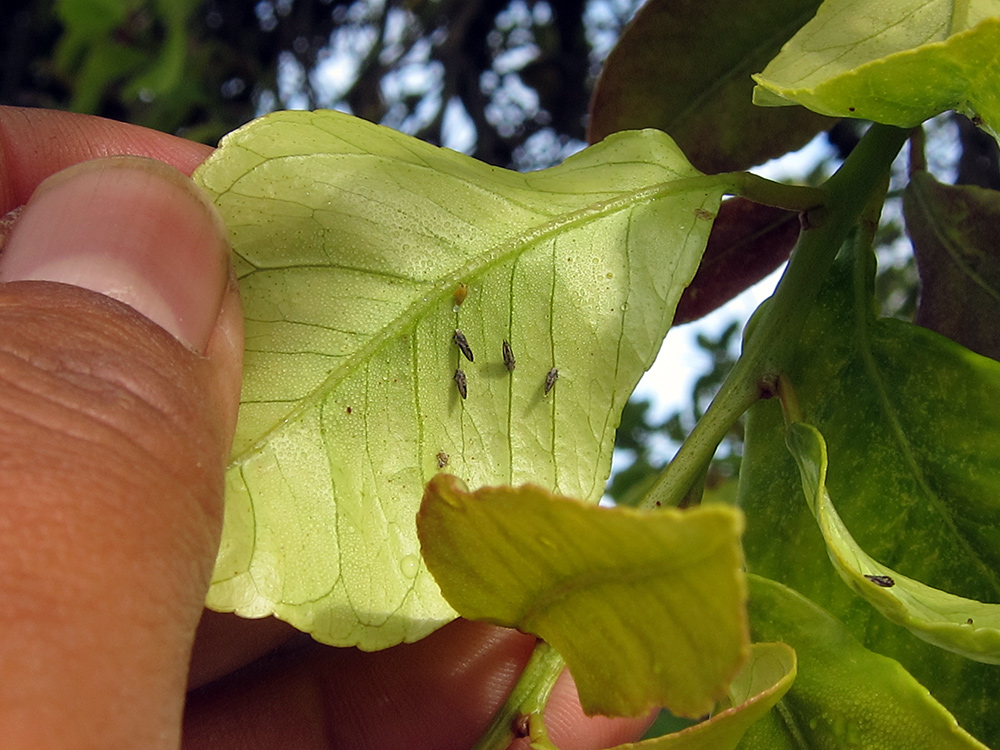If you’re a California resident, chances are you have a citrus tree in your backyard. Approximately 60% of California homeowners are estimated to have some type of citrus tree in their yard. Unfortunately, a dangerous plant disease called Huanglongbing or HLB is endangering our citrus trees in California. A pest called the Asian citrus psyllid that feeds on citrus tree leaves is responsible for spreading HLB.
Learn How to Identify Asian Citrus Psyllid and Huanglongbing
The Asian Citrus Psyllid is no bigger than a grain of rice, but it could have devastating consequences for California citrus if not stopped. The Asian citrus psyllid feeds on citrus leaves and stems and can infect citrus trees with a bacteria that causes a serious plant disease called Huanglongbing, also known as HLB or citrus greening disease. While not harmful to humans, the disease kills citrus trees and has no cure.
In order to protect our citrus trees from HLB is to learn how to identify the Asian citrus psyllid, symptoms of HLB and to prevent it from traveling and infecting other neighboring citrus trees.

Inspect for Asian citrus psyllids monthly. Look for small, brown pests that feed on citrus leaves with their body at a 45-degree angle.

A symptom of Huanglongbing is yellow discoloration on leaves that is asymmetrical, meaning not the same on both sides of the leaf.

Huanglongbing is also known as citrus greening disease because it causes fruit to stay green and not fully ripen.
If you think you have spotted the pest or disease, call the free statewide pest hotline at 800-491-1899.
Images are courtesy of CaliforniaCitrusThreat.org

